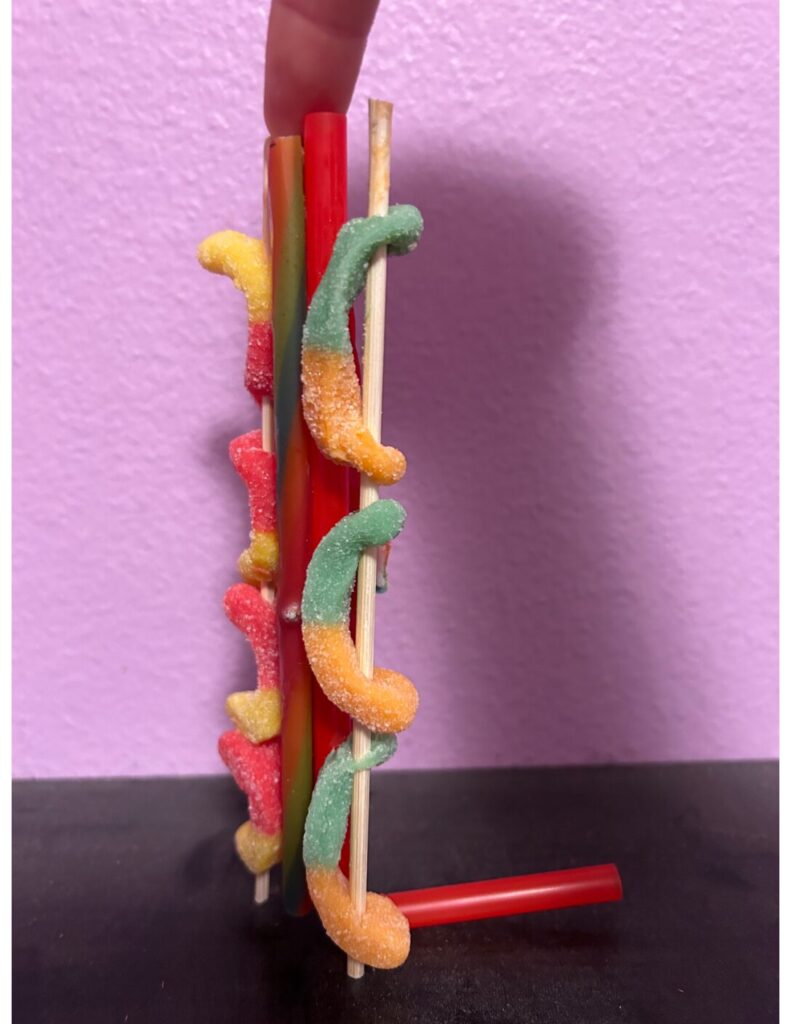Mackenzie Hawkins


In my diagram, the rainbow sweet tart rope is the Sural target Nerve. Adjacent to it is the red vine Lesser Saphenous vein. On either side of the Sural Nerve lies the green and orange Trolli gummies that represent the fibula and the red and yellow Trolli gummies that represent the Achilles tendon. The wooden skewer represents the needle that must slip between major body tissues to be administered surrounding the Sural Nerve. This is an example of a Sural Nerve Block, which is the same type of nerve block I received.

This STEAM project shows a nerve block being administered. The needle containing the anesthesia is represented by a wooden skewer. The other pieces of candy represent the tissues that the needle must bypass in order to reach the target nerve. The course objective explored by this STEAM project is “Describing the Four Major Types of Tissue”, specifically nervous tissue.
Nerve blocks are a tool used to manage acute and chronic pain. They have a lot of versatility and can be used to manage pain for hours extending up to months. They are aptly named nerve blocks by blocking signals from reaching the cortex. This is done by administering anesthesia near the nerve. This anesthesia then binds to sites on sodium ion channels in the target nerve. Once bound, it creates an electrostatic field that repels sodium ions. This prevents sodium ions from entering the channel and thus inducing an action potential. This is the basic function of nerve blocks. There are many other factors that can be adjusted to fit the patient.